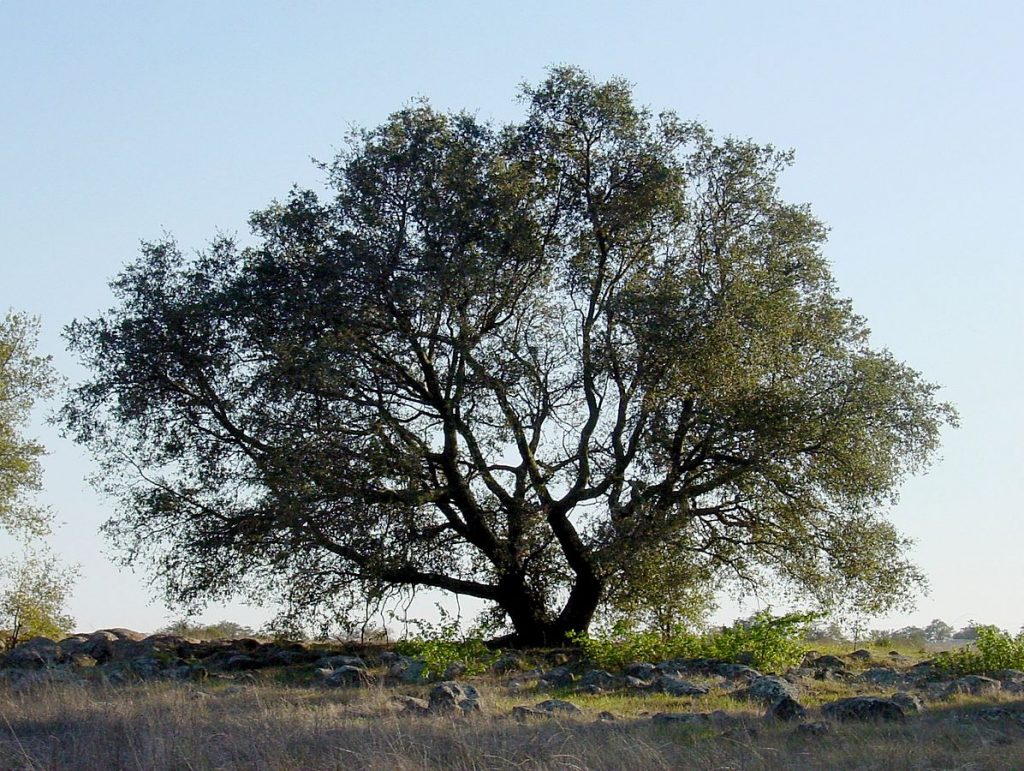
STATUS
Federal: —
State: Vulnerable
FAMILY
Fagaceae, the beech and oak family
RANGE
Southern California to northern Baja California
Species Ecology
The Engelmann oak is a semi-evergreen tree that may be drought-deciduous during the summer. It can reach a height of 18 meters. It has the smallest range of any California oak, and typically occurs in interior foothills and woodlands from Southern California to northern Baja California. Locally, it can be found below 1,300 meters in the San Gabriel and Santa Ana Mountains.
Threats
Extensive declines in Engelmann oak habitat have been observed over the past 50 years, and the species is now listed as vulnerable by the IUCN Red List. The main threats to this species include grazing and urban, agricultural, and industrial development, as well as poor regeneration by the species itself. Additionally, climate change could cause losses of 63-76% by the end of the 21st century. Even the best-case, unlimited dispersal scenarios predict losses of 2-34% (net change) in suitable habitat. Climate-driven shifts in habitat could also increase contact between Engelmann oak and individuals of other potentially hybridizing species, such as scrub oaks like Quercus berberidifolia and Quercus cornelius-mullerii.
Conservation
Engelmann oaks require increased habitat protection from land development and the projected land use changes in Southern California. Private lands are currently very important for protecting existing populations of this species, but just as important is the protection of habitat corridors between key protected areas. The acorns of Engelmann oak are dispersed by animals, and current patterns of land development and habitat degradation throughout Southern California pose formidable barriers to the species movements. Human-assisted dispersal of the oaks may be needed in the future.
Important Environmental Factors
Data source:
Riordan, E. C., Gillespie, T. W., Pitcher, L., Pincetl, S. S., Jenerette, G. D., & Pataki, D. E. (2015). Threats of future climate change and land use to vulnerable tree species native to Southern California. Environmental Conservation, 42(2), 127-138. [link]
Acknowledgements:
We thank Erin Riordan for contributing the future and current models of this species to the Atlas.
References:
- IUCN (2011) IUCN Red List of Threatened Species Version 2011.1.
- Scott (1990) in Fremontia 18.
